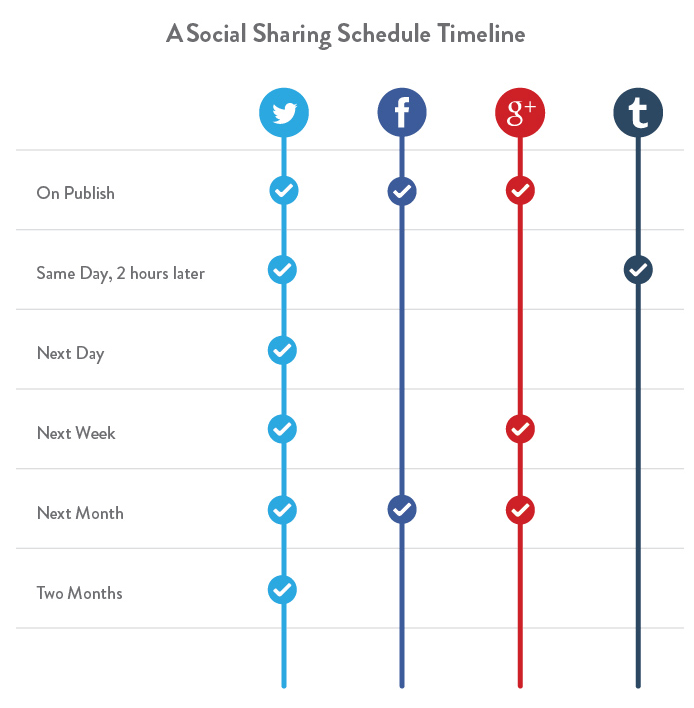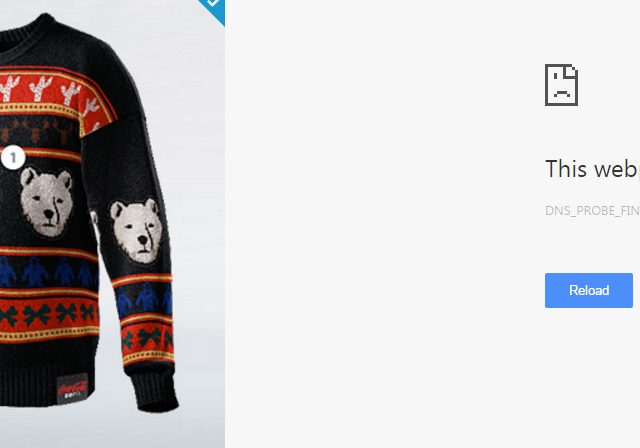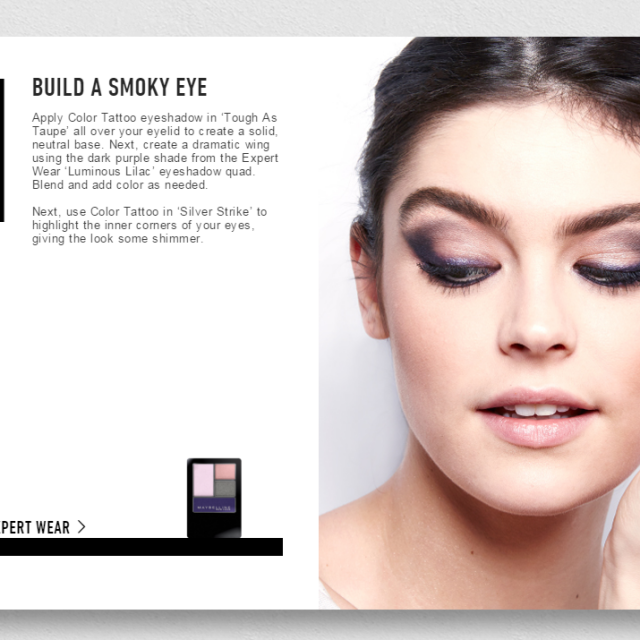How to epically FAIL at blogging - just follow this easy guide

Posted by Lisa Sills
November 18th, 2015
Ah blogging. Many have tried and many have failed, with dormant, dusty blogs now laying claim to decrepit parts of server space and corporate websites.
But why is it that certain business blogs soar while others are abandoned because no one is reading them?
Thousands of blogs have been written to coach you into being a better blogger, so today we’re going to flip the topic on its head and tell you everything you need to know to fail spectacularly at blogging. Sort of...
1. Focus on the short-term
As we all know, your best bet at blogging superstardom is to write and share a bunch of content very quickly and then stop.
Maybe you wanted to promote a specific product so you wrote and posted a load of content around that product. Once that campaign is done, kill your URLs and delete your content. You got your quick-fire wins.
What more do you need?
Truth: Living in a campaign mindset is one of the quickest ways to kill off your blog. Writing a batch of posts for a campaign or promo is great, but you need to back it up with continual posting.
Whatever you do, don't yank your content--and that goes for big brands too. Take a look at Coca Cola, a marketing giant. In 2013, they ran a campaign to create personalised Christmas jumpers. They promoted it widely and got tasty results. And what did they do afterwards?
They yanked the page. The URL 404s.
Before and after:
All that SEO juice and they pulled it. So many marketers start a campaign and let it die off afterwards. All they had to do was re-run the campaign this year, or redirect the page to the Coke homepage. Simples!
While we understand the thinking behind it, content works best when it’s long-term: when all the little parts inform the bigger parts to tie in with the brand’s message and mission.
2. See content as a ‘get rich quick scheme’
You’ve read posts with titles like ‘this one post generated $2 million in sales’, yeah? That could be you. Couldn’t it? Content is your new get rich quick plan.
Truth: Content that works well, that’s targeted and informative and employs inbound tactics, can generate leads and sales, absolutely, but it takes time and killer content.
The $2 million generating post was for a luxury swimming pool seller. The post led to the sale of seven pools—which is pretty good, but vastly inflated because of the cost of the pools.
3. Don’t market your blog or do outreach
My content is great. People will just find it if I tweet it once. The end.
Truth: Unless you’re famous or extraordinarily lucky, your blog isn’t going to explode overnight. Sure, dozens of big bloggers will write in-depth guides about going viral that include tips like ‘submit to Reddit’ or ‘send it to your email list’—but what happens if Reddit ignores you and you don’t have a subscriber list?
You market yourself of course. Market your marketing!
No marketing exists in isolation; the same goes for content. You could create the greatest video in the world but if you put it on your brand Facebook (where organic reach hits in at 2%) or leave it on your blog, it’ll be hard for people to find it.
You need to be constantly pushing it out: promote it on social channels, content aggregators, bookmarking sites, and more. If you have the budget, put social or sponsored spend behind it. Get your content out there as widely as you can.
 A suggested social sharing timeline. It's a lot!
A suggested social sharing timeline. It's a lot!
Doing business without marketing is like winking at a pretty person in a crowded room. You know what you’re doing but no one else does.
4. Don’t commit
At all. Break your blog’s heart. Maybe take it out, get to know it, and make it feel special. Push it out there, and make the moves as if it might be a long-term thing. And then rip the cord. Set it loose! Stop blogging.
Sure, 30 posts is plenty, isn't it?
Truth: At the 50 post point, a blog generally sees the first significant increase in traffic. At the point of 100 informative posts, a blog's traffic will treble—presuming of course that the content is great and that it’s SEO optimised.
If you have a budget for outreach or social media advertising, growth will happen faster, but growing a blog and building an audience takes time and sticking power.
Yes, 50 or 100 posts is a lot, but blogging is a long game. Play it right and you have the potential to reach people on a huge level and turn those readers into actual leads and customers.
5. Don’t bother with SEO
Effort of that!
Truth: SEO is vital. It's also so much more than keywords. There is a belief with some beginner bloggers that if they plug a keyword into a plug-in like SEO Yoast they’re magically telling Google exactly what they want to rank for.
Not so. SEO isn’t some kind of dark art that only the technically minded can master, but it can be a slow graft. At the very least, do keyword research on Keyword Planner and optimise your onsite elements:
- Page title: Choose catchy titles, with a couple of keywords or a long-tail keyword in there.
- Title tags: Do your research and fill in your title tags. Your title tags are the most important SEO element.
- Headings: One h1 only, and as many of the rest as you like. As much as it’s structurally important, keywords in headings give small SEO boosts.
- Meta descriptions: Not actually relevant so much for ranking, but fill them in so they’re engaging and will, in turn, lead to higher click through rates.
- Media descriptions: Alt tags, titles, etc. Again: fill them in! For your banner image, paste in your title as your alt tag.
- Social signals: Let's mention the outlier first. Social signals actually don’t affect rankings. It’s the engagement on the page that will earn you SEO points. All those RTs on Twitter mean nothing unless people are clicking through to your content and actually actively engaging with it—which lends even more credence to the fact that follower numbers is nothing without actual engagement.
- Website speed: Optimise your site so it loads quick-sharp. If you’re not sure how fast your site is, check out Google’s PageSpeed Tool.
- Internal and external links: Earning/building links is the best way to get a site to rank well. It’s also extremely difficult. A solid link from a page with high domain authority will do beautiful things for your rankings, but it’ll take work. Make sure to link internally to your own content too, when it's relevant! Just don’t go crazy!
- Mobile-friendly: A mobile-friendly site is a customer experience must and is becoming increasingly important. Again, Google has a tool to test and advise you on this one.
It’s estimated that there are hundreds of potential ranking factors, and that many of them have various permutations. At Learn Inbound in October, the Wizard of Moz Rand Fishkin briefly talked about how we need better software as the algorithm is constantly evolving.
6. Write/create/or outsource poor quality content
It’s even better if your graphics look like they were made in Paint.
Truth: Yes, we all know you can go on Fiverr and hire someone (for a fiver!) to create any kind of content you can dream of. But is that really best for your brand? You wouldn’t outsource production to the cheapest bidder—so why treat your content like that?
7. Don’t bother with grammar, good writing, or syntax
Punctuation? Pff! Syntax? NEVER!
Truth: You don’t need to be a Pulitzer-prize winning writer to take up business blogging. You don’t even need to be a writer. You need to have passion and something useful or interesting to say.
The things is, most blogs don’t fail because they’re bad or poorly written. Plenty of not so well written blogs do well in the rankings. Blogs don’t fail because of poor optimisation or because Rand Fishkin won’t open your emails or share your tweets.
Blogs fail because you don’t care about what your target audience want to read. If you turn your branded blog into one big advert, no one is going to read it. Sure, your audience want to know your spec and selling points but they don’t want ten blog posts about just that.
Just look at make-up giants, Maybelline. They could spend all their time talking about their products, or they could use their blog as a showcase for beauty tips on a site that's ridiculously pretty.
Your target audience wants relevant, interesting content that answers a question they have or solves a problem. Figure out what your audience wants to read and you’ve won half the battle. But that’s the hard part, eh!
Want to use your blog to generate leads and customers?
If you’re a brand looking to get smart about content marketing, get in touch with our award-winning team at 256 Media and we can help. In the meantime, follow us on Facebook, Twitter, and Pinterest to keep up with all things content and digital media.

Lisa Sills

Previous Post
29 Irish Content Marketing Examples
Next Post

How content marketing drove one hospital’s web traffic from 8,000 to 4 million visits per month – in just 40 months!
Subscribe Here
You may also like...
Nadia Reckmann | Aug 16, 2024
Nadia Reckmann | May 30, 2024
Nadia Reckmann | Nov 23, 2023









